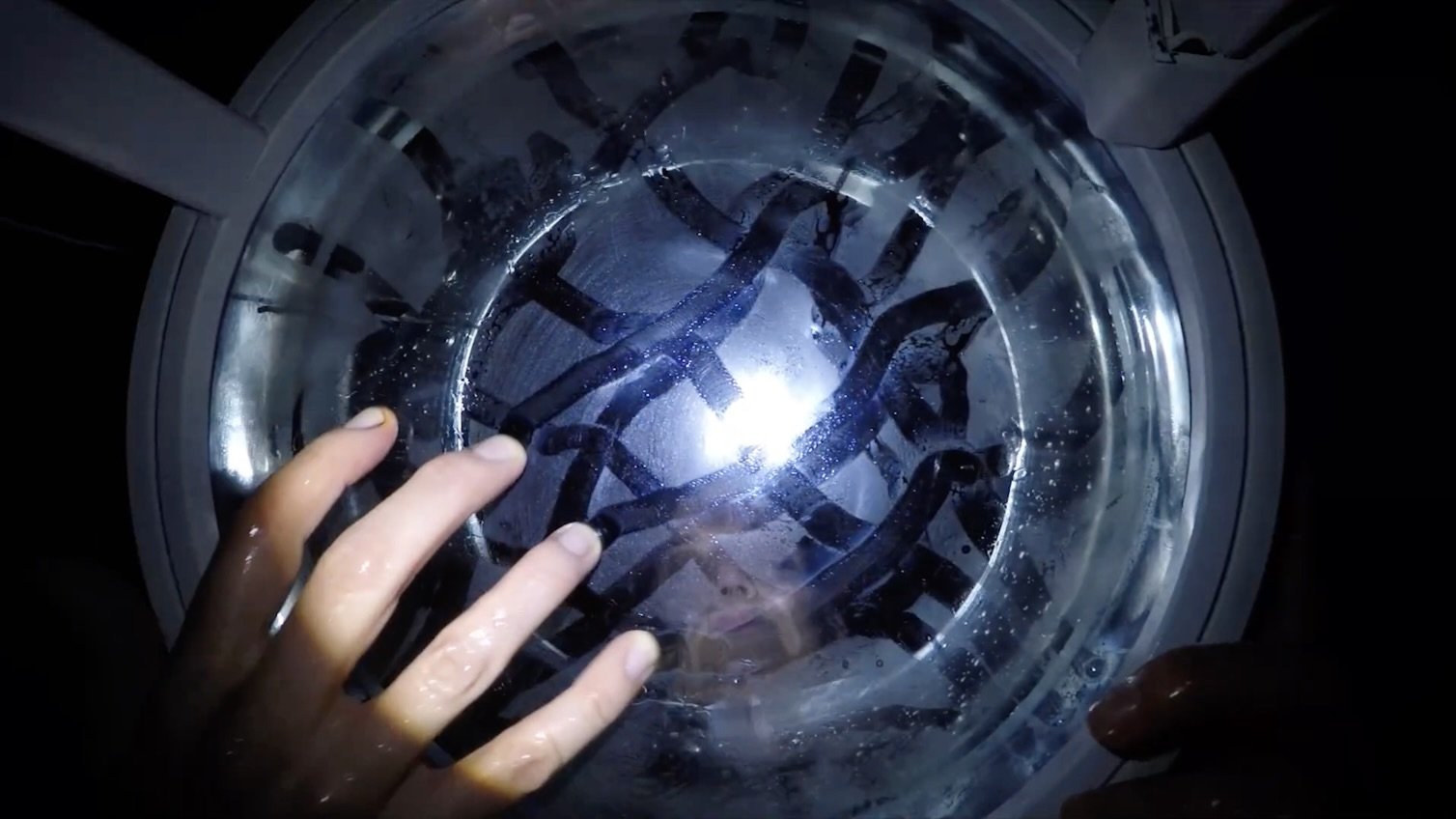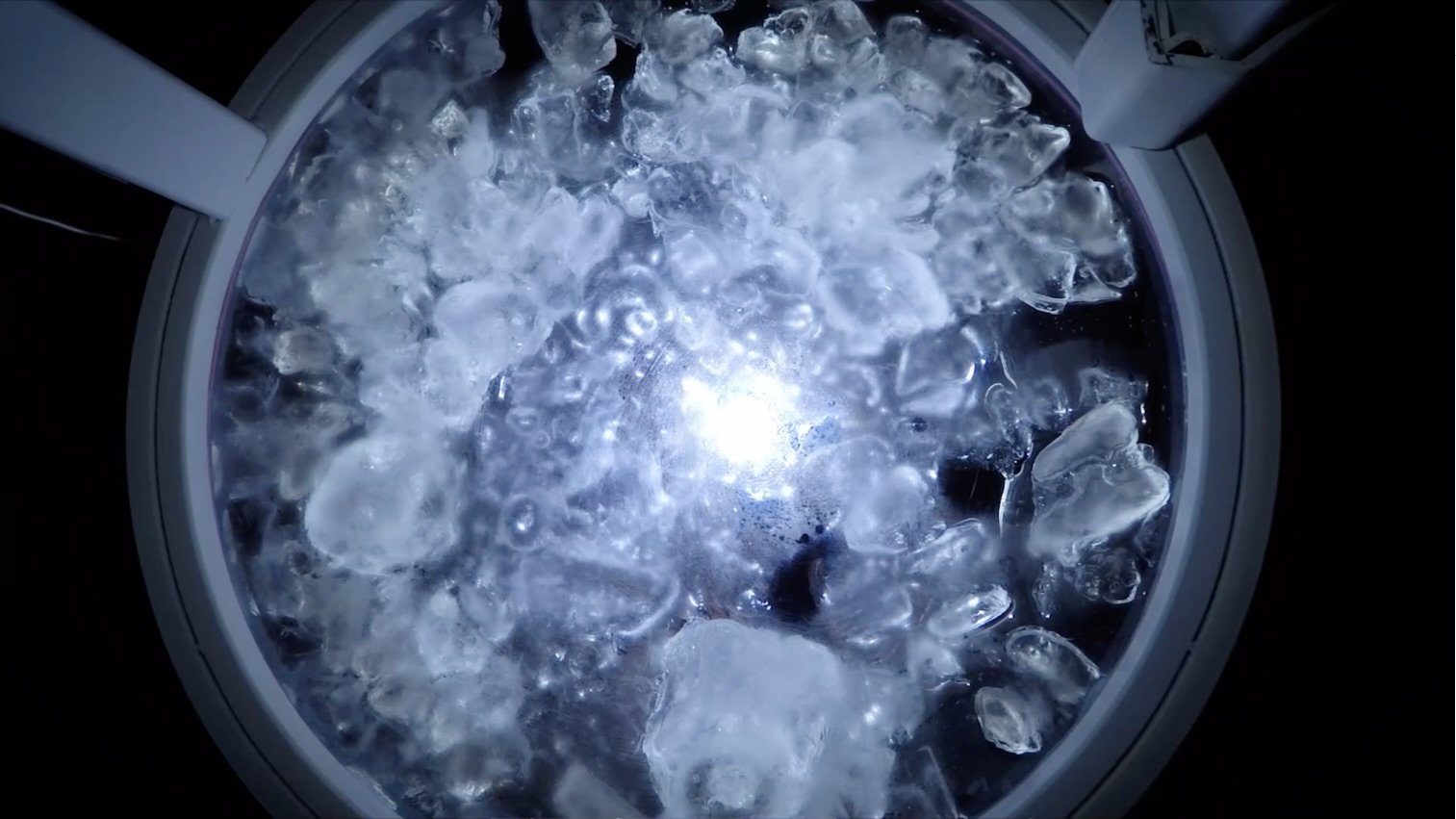水的記憶 (2022) 15’
給水裝置獨奏
水、冰塊、油墨、壓克力容器、宣紙
首演:表演者/Céline Papion,2022年11月18日,德國斯圖加特Hospitalkirche
Water Memory (2022) 15’
Water Installation Solo
water, ice, oil ink, acrylic container, cotton paper
Premiere: Performer/Céline Papion, 18 November 2022, Hospitalkirche Stuttgart
水是這些年在創作中對我而言很重要的介質,當我接觸越久,越發現它的可能幾乎是無限:水豐富的物質彈性、有機導電性與生命連結,在展演可從許多層面向切入。然而,每個作品有著不同的任務,因此在創作的最後要篩選各種有趣的發想,回到每個作品的核心主題,篩選出合宜作品的表演方式。
此曲委託創作來自斯圖加特當代音樂樂集(Stuttgarter Kollektiv für aktuelle Musik),並於2022年舉辦的Sonic Ocean Festival於11/18首演。此音樂節主要探討噪音污染對海洋生態的影響,希望藉此活動引起更多人關注此議題。地球氣候變遷,許多環保議題圍繞在能源與垃圾處理上,然而不僅於實體污染,人類製造的工業噪音也正嚴重影響著海洋生物與生態的平衡。例如,臺灣西海岸的風力發電噪音,造成了特有的白海豚瀕臨絕種,這些噪音不僅干擾了海洋生物的語言傳導,且長期威脅這些生物的棲息地,造成大量死亡,生態嚴重失衡。作為音樂工作者,耳聞這樣的資訊時,很驚訝聲音對環境的影響也如此大。感嘆身為音樂家,長期鑽研著音樂的技巧與語彙,卻鮮少了解聲音對整個環境的意義。原來這世界上的所有的聲音存在都有著演化的必要性與平衡,包含我們天天使用的語言、聆聽的音樂...等。
此作段落的演進分為以下過程:一開始容器內的冰塊由於水面上升與人的介入,開始逐漸融化消逝。而容器上冰霧的殘留讓原本純淨的水,也變得不再如一開始那麼透徹。接著表演者指尖夾帶油墨,“染指”水面,象徵著工業的汙染,而水流動的特質也讓其易於擴散。爾後,白紙接觸水面吸附了污染,如地球接收了人類的破壞;紙的出現雖帶走了水中油墨,然而水已經不如一開始純淨。此外,圓形的紙象徵著星球,如地球孕育著許多生命,也接收了許多人類的破壞、汙染,持續地在代謝、平衡。最後的段落回到感受水的本質,感謝這個物質所帶來的生命泉源。
註:此作使用的即時聲響皆是來自海底的錄音,有人為噪音與海洋生物發聲,感謝Dr. Anthony, D. Hawkins, and IFAW / MCR Song of the Whale Team. 所錄製的聲音檔,與Céline Papion提供彙整的海底錄音資料庫。
Water has a flexible texture, organic conductivity, and connection to nature and can be presented in various ways in performance.
This piece premiered at the Sonic Ocean Festival, which focuses on the impact of noise pollution on marine ecology, aiming to raise awareness of this issue among the public. While many environmental issues are related to energy and waste disposal, industrial noise generated by humans is also seriously affecting the balance of marine life and ecology. For example, the noise from wind power generation along the west coast of Taiwan has endangered the white dolphin species. Such noises not only interfere with the communication of marine life but also pose a long-term threat to their health, leading to a significant number of deaths and ecological imbalances.
When I learned about these facts, I was shocked. As a musician, I rarely consider the significance of sound in the broader environment. It turns out that sound can have a tremendous impact on our surroundings. All sound phenomena in the world have their own evolutionary necessity and balance, including the language we use every day, the music we listen to, and more.
The piece consists of several scenes: at the beginning, the ice in the container gradually melts and disappears due to the rising water level and the interference of the performer. Additionally, the mist from the melting ice makes the previously clear water less transparent. Next, the performer's fingertips, stained with ink, touch the water's surface, representing industrial pollution. The fluidity and spreadability of water make it easy for the ink to disperse. Following this, a piece of paper is placed on the water's surface to absorb the pollution, just as the earth absorbs human-generated pollutants. Although the white paper removes the ink from the water, the water is still not as pure as it was at the beginning.
Moreover, a circle symbolizes the planet, which nourishes life but also suffers from human destruction. It is continuously metabolized and balanced. In the final part, the focus shifts back to the essence of water, and the performer expresses gratitude to this life-giving substance.
Note: The real-time sound used in this piece is all recorded from the seabed, including human-made noise and sounds from marine organisms. Special thanks to Dr. Anthony, D. Hawkins, and IFAW/MCR Song of the Whale Team for the recorded sound files and Céline Papion for the compiled database of underwater recordings.






